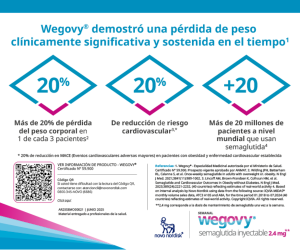P33 Animal model based on a diet high-carbohydrates and low doses of streptozotocin in the induction of type 2 diabetes mellitus
DOI:
https://doi.org/10.47196/diab.v54i3Sup.418Keywords:
diethigh-carbohydrates, low doses of streptozotocin, type 2 diabetesAbstract
Introduction: Type 2 diabetes (T2D) is a metabolic disorder characterized by chronic hyperglycemia, accounting for approximately 90% of all cases of diabetes and mainly due to poor eating habits. In the Peruvian population there is an increase of unhealthy diets based mainly on an excess consumption of carbohydrates (63%) unlike other countries in South America. The increase in T2D cases implies the need to search for more effective treatment regimens, which is why it is first necessary to design animal models to achieve this objective.
Objective: develop a model of T2D in rats with the use of a diet high-carbohydrates and easily digested fats and low doses of streptozotocin (STZ).
Material and methods: 24 Sprague-Dawley rats were used in two groups: control group (CG): normal diet (4); and treatment group (GT): hypercaloric diet (20), for 2 months, and then both groups were chemically induced with STZ (30 mg / Kg.). The GT diet was: 5.95% Kcal from protein, 25.7% Kcal from fat and 58.5% Kcal from carbohydrates (caloric value: 483.25 Kcal / 100gr). GC was: 17% Kcal of protein, 3% Kcal of fat, 50% Kcal of carbohydrates and the remaining fiber, moisture, ash and nitrogen-free extracts (caloric value: 295 Kcal / 100g). Glycemia was measured before and after the differentiated diet and at 5 and 10 days after chemical induction. Serum insulin was carried out after induction.
Results: Both groups had an increase in glycemia levels at 2 months of the differentiated diet, however, these differences were not significant between the groups (CN and GT p> 0.1280).In total 90% (18 of 20) rats of the treated group developed T2D, against 0% in the control group (p <0.0014) increased glycemia. In the GT group, significant differences were found (p = 0.0013) in the post-chemical induction glycemia levels compared to the CN group. In the GT rats, insulin levels were significantly lower than in the CN (p <0.0002).
Conclusion: A new experimental model of T2D was developed adapted to the nutritional habits of a part of the Peruvian population. We have shown that a diet rich in sugars and unhealthy fats causes the predisposing condition for the development of T2D.
Downloads
Published
Issue
Section
License

This work is licensed under a Creative Commons Attribution-NonCommercial-NoDerivatives 4.0 International License.
Dirección Nacional de Derecho de Autor, Exp. N° 5.333.129. Instituto Nacional de la Propiedad Industrial, Marca «Revista de la Sociedad Argentina de Diabetes - Asociación Civil» N° de concesión 2.605.405 y N° de disposición 1.404/13.
La Revista de la SAD está licenciada bajo Licencia Creative Commons Atribución – No Comercial – Sin Obra Derivada 4.0 Internacional.
Por otra parte, la Revista SAD permite que los autores mantengan los derechos de autor sin restricciones.




























